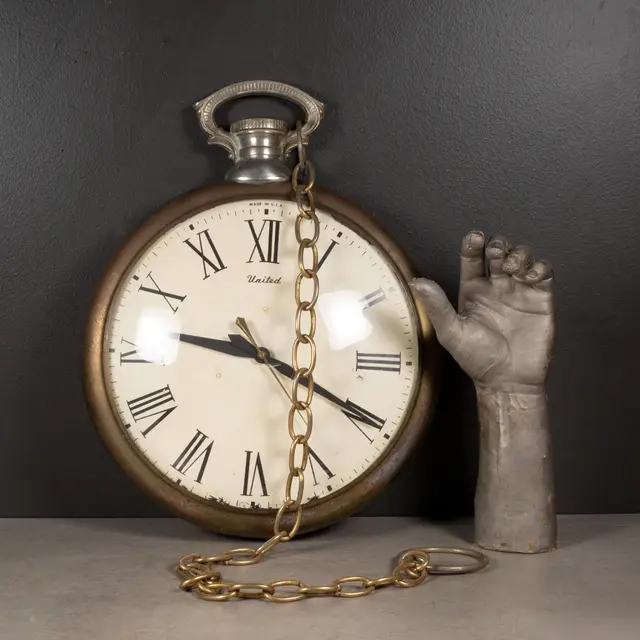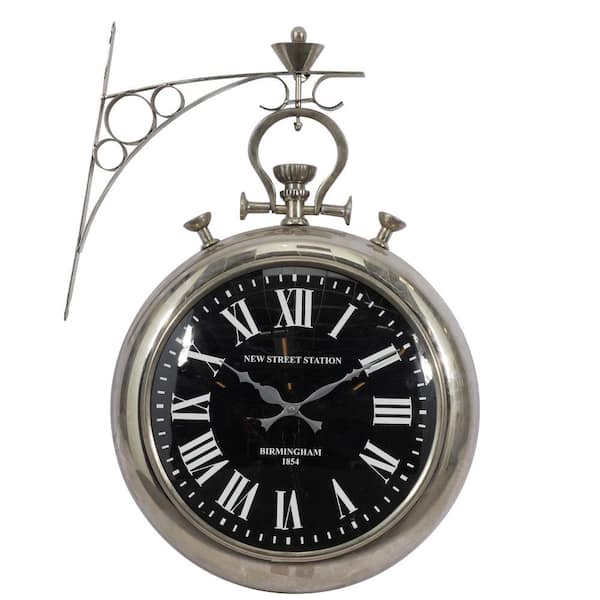The Evolution of Timekeeping: From Sundials to Smart Clocks
Timekeeping has come a long way since the days of ancient civilizations using sundials. These early devices relied on the sun’s shadow to indicate time, a method that had obvious limitations. With the advent of mechanical clocks in the 14th century, timekeeping became more precise and accessible. These clocks were large, often occupying public spaces in European towns, and became central to social and economic life.
As technology progressed, so did the sophistication of timepieces. The development of spring-driven clocks in the 15th century, followed by the pendulum clock in the 1650s, marked significant strides in accuracy. Pocket watches and eventually wristwatches became popular in the 19th and 20th centuries, further democratizing timekeeping.
The latest shift in the evolution of timepieces is marked by the digital age. Quartz clocks and watches offered the next leap in precision, leading to the creation of atomic clocks, which are the most accurate of all, losing just one second every million years. As the 21st century unfolds, smart clocks integrate advanced features like stop watch functions, internet connectivity, and more.
Modern consumers now seek multifunctional devices, hence the growing interest in stop watch wall clock that blend traditional aesthetics with modern functionality. These wall clocks not only tell time but also include stop watch features, meeting the diverse needs of today’s fast-paced lifestyles. As we reflect on the journey from sundials to smart clocks, it’s evident that the drive for greater precision and convenience in timekeeping remains constant through the ages.
Exploring the Concept of Stop Watch Wall Clocks
The integration of stop watch features into wall clocks is a fascinating innovation. Traditionally, wall clocks have served the singular purpose of displaying time. The inclusion of a stop watch introduces a dynamic element, transforming a simple timepiece into a multifunctional tool. This hybrid design caters to a contemporary audience that values both form and function in household items.
Stop watch wall clocks are an example of how modern technology can enhance traditional objects. These clocks retain the classic look that many consumers love, while also providing the added utility of timing activities. With the press of a button, users can measure time intervals, making it perfect for cooking, exercising, or any task that requires precise timing. The convenience of having a stop watch readily available on the wall streamlines everyday tasks and adds value to the functionality of domestic spaces.
The concept of merging a stop watch with a wall clock may seem straightforward, but it requires thoughtful design and engineering. Aesthetics must be balanced with the practicality of the stop watch mechanism. The clock must remain easy to read at a glance while the stop watch function should be intuitive and user-friendly. This dual-purpose design reflects a wider trend in consumer products: a movement towards items that offer more than one function, conserving space and simplifying life. This concept is appealing not just for its practicality but for the potential it holds to improve the efficiency of our daily routines.
Design Considerations for Stop Watch Wall Clocks
When creating stop watch wall clocks, designers face unique challenges. They must ensure that the clock’s look remains appealing while integrating the stop watch function seamlessly. It’s important that these clocks strike a balance between timeless style and modern technology.
Several key aspects need careful thought:
- Visibility: The clock’s display must be clear. Large numbers or digital readouts help users see time from afar.
- User-Friendliness: The stop watch controls should be within easy reach. They also need to be simple to use, with minimal hassle.
- Accuracy: As with any timekeeping device, precision is crucial. The stop watch feature must measure time without fail.
- Aesthetic Appeal: A wall clock often serves as a room’s focal point. Its design should complement the decor and reflect personal taste.
- Durability: High-quality materials ensure the clock withstands frequent use, especially the stop watch mechanism.
- Sound Design: For some, the ticking of a clock can be calming or distracting. This factor should align with user preference.
Designers often walk a tightrope, balancing these elements to craft a product that’s both practical and pleasing to the eye. A well-designed stop watch wall clock is not just a timekeeper; it’s a statement piece that caters to the functionalities of modern living.
Key Features to Include in Your Stop Watch Wall Clock
When adding stop watch features to wall clocks, some key elements are vital for functionality and appeal. Here are essential features that should not be overlooked in your stop watch wall clock design:
- Easy-to-Use Interface: The stop watch should have a simple interface. Buttons for start, stop and reset are crucial. They should be prominent for easy access.
- Readable Display: Numbers on the clock must be big and clear. Users should read the time from a distance without strain.
- Precision Timing: The stop watch must be precise. It should keep count accurately for reliable use.
- Durable Materials: Use materials that can handle frequent use. The clock should last long, even with the stop watch function in regular use.
- Aesthetic Integration: The stop watch should fit well with the clock design. It must look like a natural part of the wall clock.
- Sound Control: Offer a mute option if the ticking sound is not desired. Some users prefer a silent stop watch function.
- Memory Function: The ability to record and recall times can be valuable. This feature is particularly useful for tracking repetitive tasks.
Incorporate these features to ensure your stop watch wall clock stands out. It should offer convenience, accuracy, and style in one functional device.
The Benefits of Having Stop Watch Functions in Wall Clocks
The addition of stop watch functions to wall clocks brings several advantages to users. First and foremost, it offers convenience. With a stop watch feature on your wall clock, you no longer need a separate device to time your activities. This is particularly beneficial in environments like the kitchen or a home gym, where timing is often critical and having multiple devices can be cumbersome.
Stop watch wall clocks also enhance productivity. They make it easy to track time spent on tasks. This is valuable for those who engage in time-sensitive activities or need to manage their work periods effectively. Being able to measure and manage time upgrades the humble wall clock from a passive ornament to an active tool in time management.
Furthermore, these clocks serve educational purposes. They can be used to teach children the concept of time. Kids can learn about time intervals and the importance of punctuality while using the stop watch feature. This multifaceted approach enriches the learning experience and turns an everyday item into a teaching aid.
Aesthetic value is another benefit. Stop watch wall clocks can be fashionable and functional décor items. They offer a modern twist to traditional wall clocks, fitting well into any interior design scheme. A carefully selected stop watch wall clock can serve as the centerpiece of a room, merging utility with beauty.
Lastly, for fitness enthusiasts, a stop watch wall clock in plain sight is a constant motivator. It can encourage you to time your workouts right in the comfort of home. The visible timer can be a call to action, reminding you to stay active and keep fitness goals on track.
Overall, integrating stop watch features into a wall clock not only expands its uses but also adds value to living spaces. By combining traditional timekeeping with modern necessities, it adapts to the multifunctional demands of contemporary life.
Installation Guide for Stop Watch Wall Clocks
Installing a stop watch wall clock is straightforward if you follow these steps:
- Choose the Right Location: Consider visibility and ease of access. The clock should be in a place where it’s easily seen and reached.
- Mark the Spot: Once you’ve chosen the location, mark where the clock will hang. Ensure it’s within reach to use the stop watch features.
- Secure the Wall Fixings: Use wall plugs and screws suitable for your wall type. Follow the manufacturer’s instructions for secure mounting.
- Attach the Clock: Carefully attach the clock to the wall fixings. Make sure it’s secure and level.
- Set the Time and Test: Set the time according to the clock’s manual. Test the stop watch function to ensure it’s working correctly.
By keeping these tips in mind, your stop watch wall clock will be up and running in no time. Ensure the location is appropriate for its size and that it fits well with the room’s aesthetic. Remember, the clock’s placement should not only be about style but also practicality for its stop watch function.
Maintenance Tips for Longevity and Accuracy
To ensure your stop watch wall clock remains accurate and lasts over time, consider these maintenance tips:
- Regular Cleaning: Dust and debris can interfere with clock mechanisms. Clean your clock regularly with a soft cloth.
- Battery Checks: Replace batteries as needed to keep the stop watch function running smoothly. Don’t wait for them to die completely.
- Moisture Control: Keep the clock away from damp areas. Moisture can damage the internal parts and affect accuracy.
- Temperature Stability: Avoid placing the clock in direct sunlight or near heat sources. Extreme temperatures can harm the clock’s operation.
- Gentle Handling: When adjusting the clock or using the stop watch features, do so with care. Rough handling can lead to damage.
- Professional Servicing: Have the clock checked by a professional periodically, especially if you notice any timekeeping issues or strange sounds.
By following these tips, you will maintain the performance and appearance of your stop watch wall clock.
Comparison: Traditional Wall Clocks vs. Stop Watch Wall Clocks
When comparing traditional wall clocks with those boasting stop watch features, several key differences emerge:
- Functionality: Traditional wall clocks display time at a glance. Stop watch wall clocks go further by timing activities to the second. This makes them versatile and practical for various tasks.
- Design: The aesthetics of traditional clocks focus on classic styles. Stop watch clocks fuse this traditional appeal with modern design to meet current tastes and needs. Their interface includes added buttons for stop watch control.
- Use Case: Traditional clocks serve a passive role in decor and timekeeping. Stop watch wall clocks offer an active tool for managing time in tasks like cooking or exercising. They play a larger role in the daily routines of users.
- Innovation: While traditional clocks have stood the test of time, stop watch clocks represent innovation. They bring a new dimension to wall clocks by integrating advanced timekeeping functions.
- Value Addition: Standard wall clocks are mainly about aesthetics. Stop watch wall clocks add functional value to spaces. They turn the concept of a timepiece into a multifunctional device.
Between traditional and stop watch wall clocks, the choice often comes down to need. If precise timing and multifunctionality align with your lifestyle, a stop watch wall clock could be the perfect fit. Conversely, for those who prefer simplicity and classic design, traditional wall clocks remain a timeless choice.




